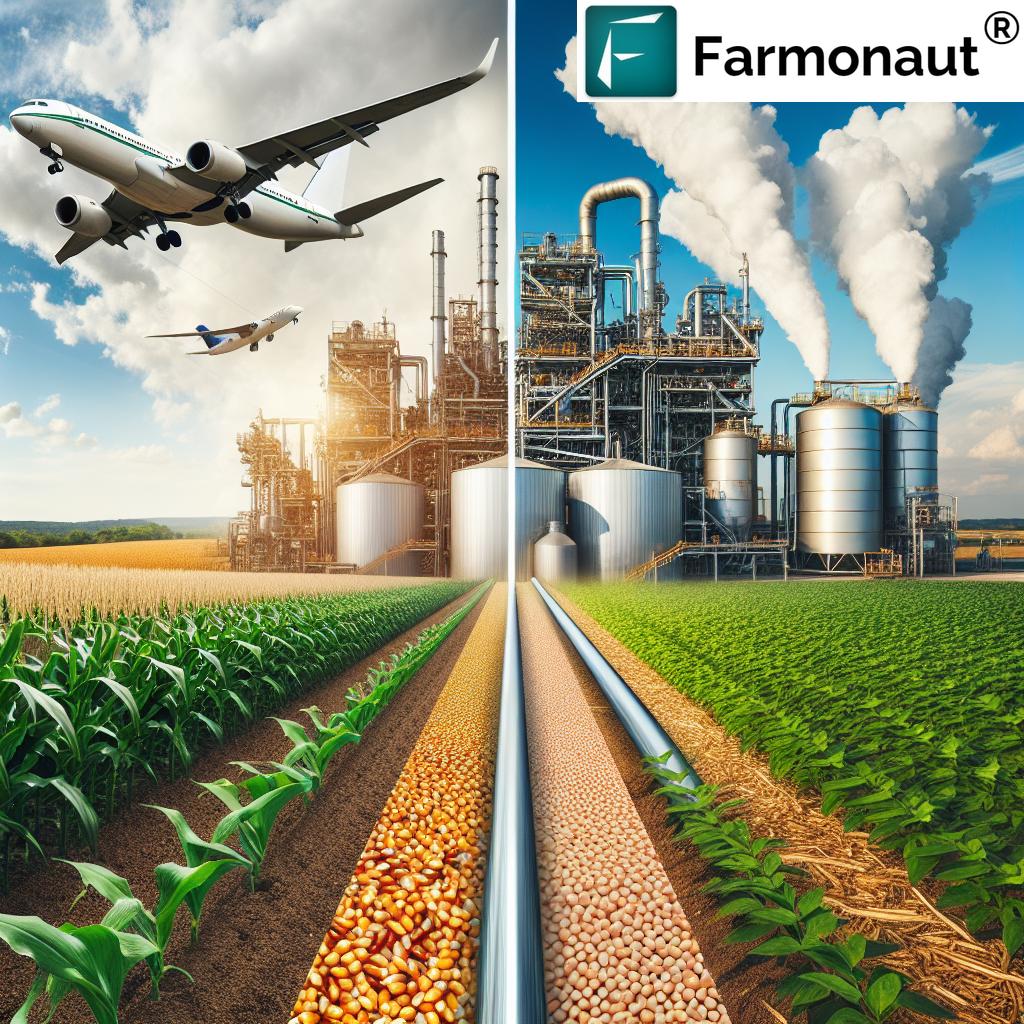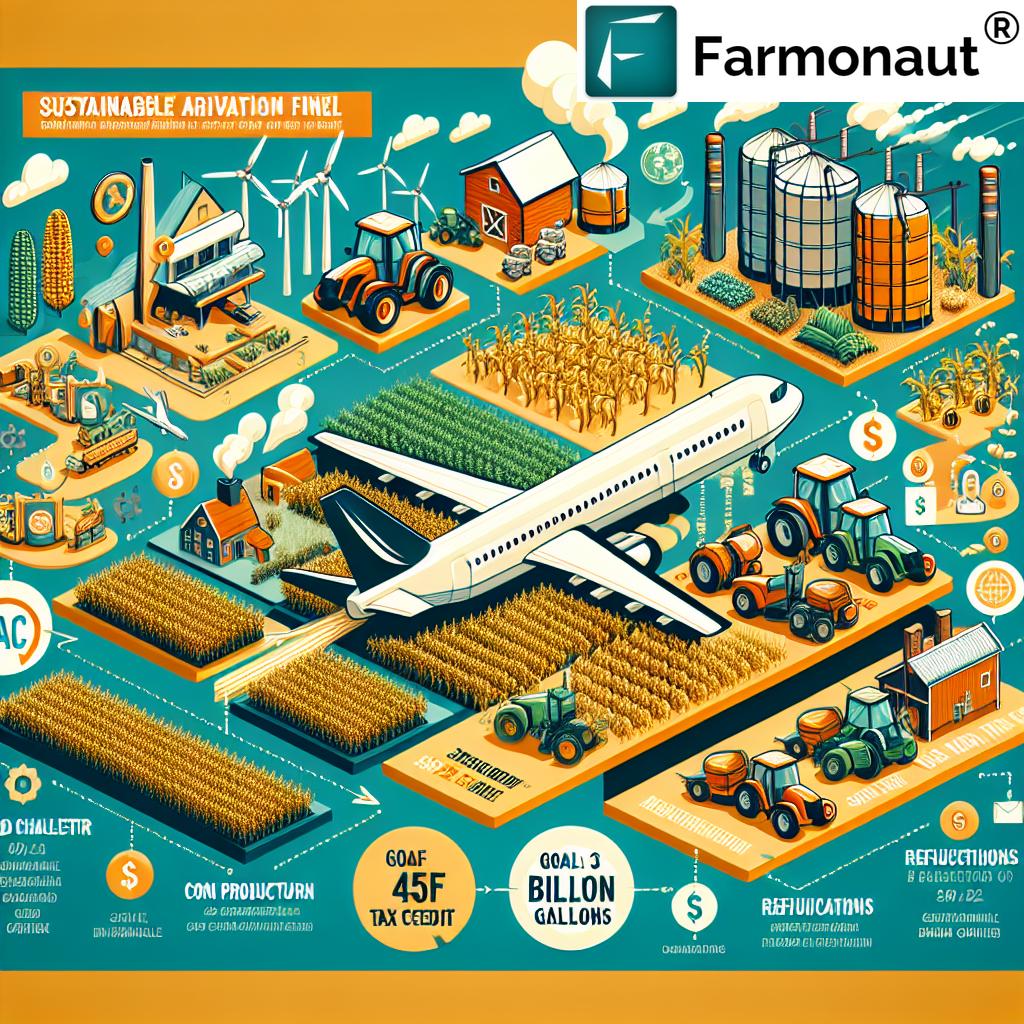Unleashing the Power of Sustainable Aviation Fuel: A Game-Changing Opportunity for U.S. Agriculture and Biofuels

In a groundbreaking development for the U.S. agricultural and biofuels sectors, sustainable aviation fuel (SAF) is emerging as a promising avenue for substantial growth in biofuels production. This new frontier not only offers a path to cleaner air travel but also presents a unique opportunity for rural economy revitalization and the reduction of greenhouse gas emissions.
The Rise of Sustainable Aviation Fuel
SAF represents a significant leap forward in the quest for greener transportation. Unlike conventional jet fuel, SAF is derived from renewable sources, making it a critical component in the fight against climate change. The agricultural feedstocks for SAF are set to play a pivotal role in the supply chain for domestic production, potentially transforming the landscape of American farming.
However, the success of this venture hinges on favorable policies and adequate incentives for farmers and the wider biofuels industry. The anticipated guidance for the 45Z tax credit, also known as the Clean Fuel Production Credit, will be a determining factor in shaping agriculture’s role in SAF production.
The Clean Fuel Production Credit: A Game Changer?
Authorized by the Inflation Reduction Act, the 45Z tax credit is designed to encourage domestic production of clean transportation fuels. Set to take effect on January 1, 2025, it replaces the 40B tax credit for SAF production. However, the industry eagerly awaits the final guidance, which will clarify the extent of agriculture’s involvement in this revolutionary fuel source.
Jacqui Fatka, farm supply and biofuels economist with CoBank, notes, “The 40B tax credit guidance for SAF fell short in effectively incentivizing farmers to adopt the prescribed set of on-farm conservation practices required to be eligible for the credit. Farmers are hoping the new guidance offers more flexibility to employ practices that are applicable to their individual operations.”

The Evolution of Low-Carbon Biofuels
The advent of low-carbon biofuels has already ushered in an era of new market opportunities for U.S. farmers. Beginning with ethanol in 2005 and continuing with biodiesel and renewable diesel, these cleaner-burning transportation fuels have supported farm incomes and strengthened rural economies, particularly during periods of low commodity prices.
While SAF may not offer an immediate solution for lower commodity prices, it does provide longer-term opportunities to revitalize rural America. This aligns perfectly with the goals of rural economy revitalization through SAF, creating a sustainable path forward for American agriculture.
The SAF Grand Challenge: Ambitious Goals for a Greener Future
The SAF Grand Challenge, announced by the Biden administration in September 2021, has set ambitious production goals:
- 3 billion gallons of SAF by 2030
- 35 billion gallons by 2050, satisfying 100% of domestic airline fuel demand
These SAF Grand Challenge goals represent a clear commitment to sustainable aviation and offer a roadmap for the industry’s future. According to the latest government dashboard of SAF projects, the near-term goal is within reach, with projected annual production between 2.6 billion and 4.9 billion gallons by 2030.
However, achieving these targets will depend on policy initiatives and market conditions that provide biofuel producers the flexibility to expand production capacity of both renewable diesel and SAF.
Challenges and Uncertainties
Despite the promising outlook, several challenges remain:
- The delay in finalizing the 45Z tax credit guidance is causing uncertainty for farmers, biofuel producers, and other market participants.
- The lack of longer-term incentives beyond the three-year authorization of the 45Z tax credit in the Inflation Reduction Act.
- The need for offtake agreements from the airline sector to ensure market stability.
Fatka emphasizes, “Biofuel producers are unlikely to move forward on any expansion plans until the new guidance is published. And the delay creates more uncertainty for farmers as they make decisions about planting, input purchases and conservation programs for 2025.”
The Role of Climate-Smart Agriculture
As the industry awaits the final guidance, there’s hope that it will include improved accounting for climate-smart agriculture practices. This could provide a significant boost to farmers adopting sustainable farming methods, aligning agricultural practices with the goals of SAF production.
Farmers interested in exploring these practices can leverage technology to optimize their operations. Farmonaut’s satellite-based crop monitoring platform offers valuable insights for precision agriculture, supporting the transition to more sustainable farming methods.
The Future of SAF: A Collaborative Effort
The success of SAF as a game-changing opportunity for U.S. agriculture and biofuels will require collaboration across multiple sectors. From farmers adopting sustainable practices to biofuel producers expanding their capabilities, and from policymakers providing the right incentives to airlines committing to SAF usage, each stakeholder has a crucial role to play.
For those looking to stay at the forefront of agricultural technology, Farmonaut offers cutting-edge solutions:
- Satellite Weather API for real-time agricultural insights
- API Developer Docs for integrating advanced agricultural data into your applications
Conclusion: A Sustainable Horizon
As we stand on the brink of a new era in aviation and agriculture, the potential of sustainable aviation fuel shines bright. With the right policies, incentives, and technological advancements, SAF could indeed become a game-changer for U.S. agriculture and biofuels, ushering in a more sustainable and prosperous future for rural America while significantly reducing the carbon footprint of air travel.
The journey towards widespread SAF adoption may be complex, but the rewards – for farmers, the environment, and the aviation industry – are potentially transformative. As we await further developments in policy and technology, one thing is clear: the future of aviation fuel is green, and American agriculture is poised to lead the way.


